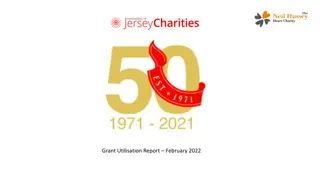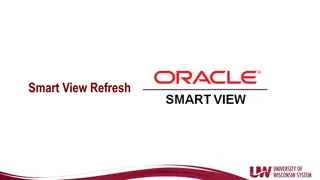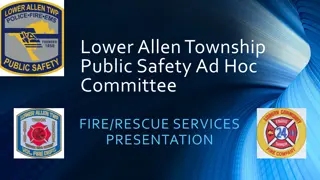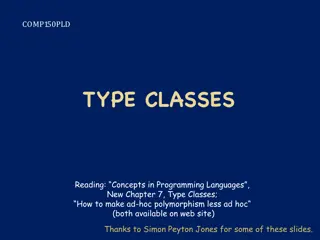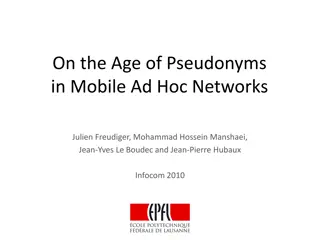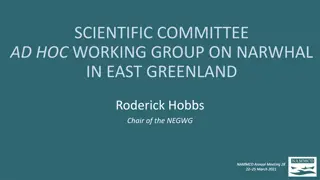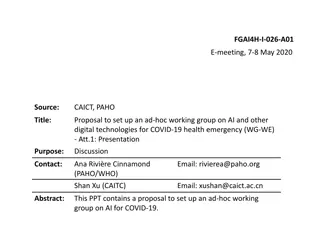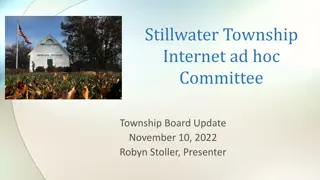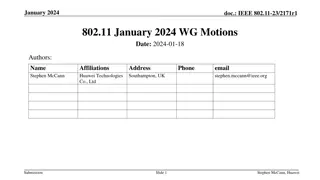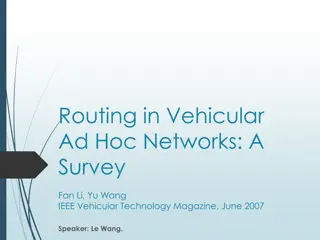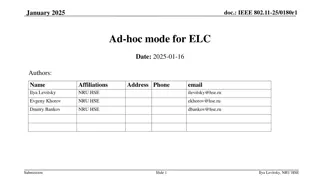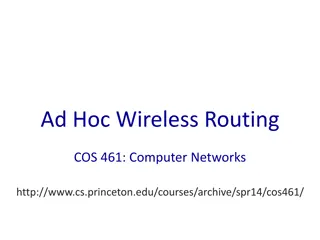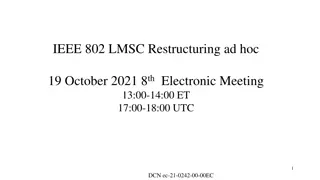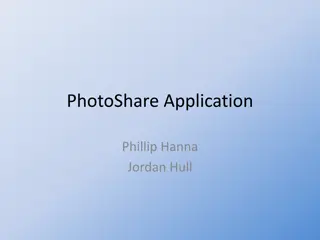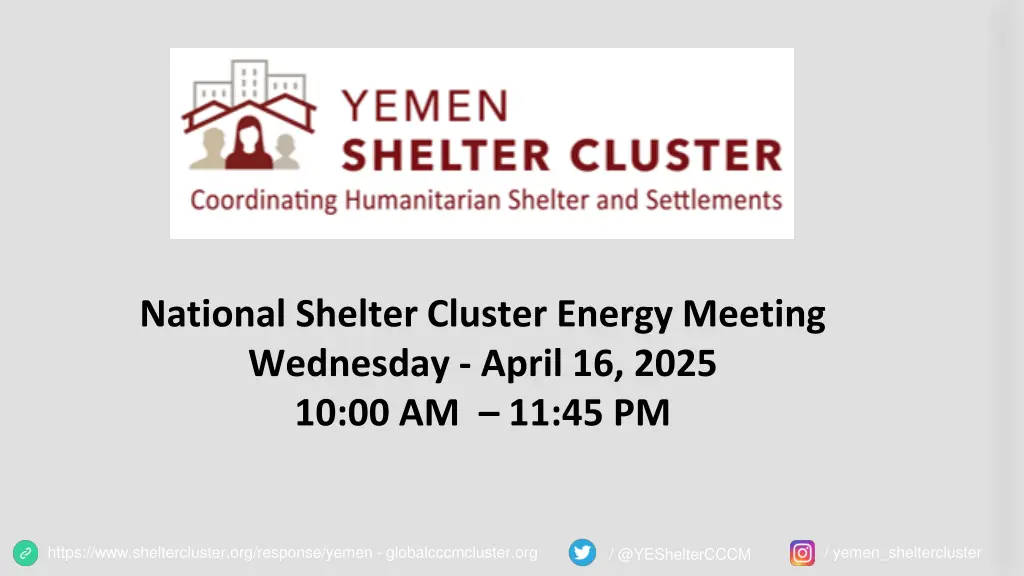
Understanding Energy Needs and Solutions in Shelter Clusters
Explore the discussion on local energy needs, cultural influences on energy use, access to alternative energy, and more at the National Shelter Cluster Energy Meeting. Delve into community preferences, behaviors, and challenges for effective and culturally appropriate energy solutions.
Download Presentation

Please find below an Image/Link to download the presentation.
The content on the website is provided AS IS for your information and personal use only. It may not be sold, licensed, or shared on other websites without obtaining consent from the author. If you encounter any issues during the download, it is possible that the publisher has removed the file from their server.
You are allowed to download the files provided on this website for personal or commercial use, subject to the condition that they are used lawfully. All files are the property of their respective owners.
The content on the website is provided AS IS for your information and personal use only. It may not be sold, licensed, or shared on other websites without obtaining consent from the author.
E N D
Presentation Transcript
National Shelter Cluster Energy Meeting Wednesday - April 16, 2025 10:00 AM 11:45 PM https://cdn-images.mailchimp.com/icons/social-block-v2/color-link-128.png https://www.sheltercluster.org/response/yemen - globalcccmcluster.org / yemen_sheltercluster / @YEShelterCCCM
Meeting Agenda 1. Welcome and Introductions (10 mins) 2. Local Energy Needs and Preferences (20 mins) 3. Cultural and Behavioral Influences on Energy Use (20 mins) 4. Access to Alternative Energy: Opportunities and Challenges (20 mins) 5. How Living Conditions of IDPs, Returnees, and Host Communities Affect Energy Use (20 mins) 6. AOB (Let us know if you have any) (5 mins) https://cdn-images.mailchimp.com/icons/social-block-v2/color-link-128.png https://www.sheltercluster.org/response/yemen - globalcccmcluster.org / yemen_sheltercluster / @YEShelterCCCM
INTRODUCTION https://cdn-images.mailchimp.com/icons/social-block-v2/color-link-128.png https://www.sheltercluster.org/response/yemen - globalcccmcluster.org / yemen_sheltercluster / @YEShelterCCCM
2. Local Energy Needs and Preferences Before we move into solutions, it's important to first understand the community s actual needs and daily realities. Let's take some time to discuss the local energy needs and preferences how people currently Cook, light, heating and cooling their homes, or charge devices, What challenges or risks they face in doing so. Understanding these practices will help us find energy solutions that are not only effective but also acceptable, affordable, and culturally appropriate." https://cdn-images.mailchimp.com/icons/social-block-v2/color-link-128.png https://www.sheltercluster.org/response/yemen - globalcccmcluster.org / yemen_sheltercluster / @YEShelterCCCM
3. Cultural and Behavioral Influences on Energy Use What cultural practices or daily habits shape how energy is used in your IDPs places? Energy use is not just technical it s deeply cultural and behavioral. The way people cook, light their homes, or use appliances is shaped by traditions, habits, gender roles, and even social norms. So, during this session, let s reflect together on: What might encourage or discourage people from switching to clean energy options? https://cdn-images.mailchimp.com/icons/social-block-v2/color-link-128.png https://www.sheltercluster.org/response/yemen - globalcccmcluster.org / yemen_sheltercluster / @YEShelterCCCM
4. Access to Alternative Energy: Opportunities and Challenges Let us now focus to a key issue: Access to Alternative Energy. What makes alternative energy work in our context? Alternative sources like solar, biogas, and eco- briquettes offer sustainable options, we also know that the implementation presents several challenges ranging from affordability and infrastructure to community acceptance and policy alignment. What can be the barriers to alternative energy ? I d like us to think together on two main point: https://cdn-images.mailchimp.com/icons/social-block-v2/color-link-128.png https://www.sheltercluster.org/response/yemen - globalcccmcluster.org / yemen_sheltercluster / @YEShelterCCCM
5. How Living Conditions of IDPs, Returnees, and Host Before we design or scale any energy solution, it s important to understand the living conditions of the people we're trying to serve whether they are internally displaced persons (IDPs), returnees, or host communities. Each group experiences different levels of stability, infrastructure, and access to resources, which directly influences how they use energy, what they can afford, and what solutions are realistic. In this discussion, we want to explore: How do current shelter types, mobility, safety, and economic conditions shape energy needs and preferences? Understanding this helps us design energy responses that are not only effective but also fair, practical, and context-sensitive. https://cdn-images.mailchimp.com/icons/social-block-v2/color-link-128.png https://www.sheltercluster.org/response/yemen - globalcccmcluster.org / yemen_sheltercluster / @YEShelterCCCM
6. AoB: (Let us know if you have any) KEY POINT OF AGENDA ITEM INPUT 1. What energy sources do people currently use for cooking, lighting, and heating in this community? 2. What are the biggest challenges or risks people face when accessing or using these energy sources? Local Energy Needs and Preferences 3. What types of energy solutions would people prefer to use if they were affordable and available? 1. How do cultural habits and traditions shape energy use in households and communities? Cultural and Behavioral Influences on Energy Use 2. What are common behaviors or beliefs that encourage or obstruct the adoption of clean energy solutions? 3. How can energy solutions be better adapted to the needs, and lifestyles of local communities? 1. What alternative energy sources are most needed or desired in your community, and why? 2. What are the biggest challenges people face when trying to access or use alternative energy solutions (e.g., solar kits, biogas, briquettes)? Access to Alternative Energy: Opportunities and Challenges 3. What support would make it easier for families or communities to adopt clean energy solutions? -Financial, -Technical, -Awareness campaign 1. How do the living conditions in shelters or temporary housing influence the way people cook, light, or heat their homes? How Living Conditions of IDPs, Returnees, and Host Communities Affect Energy? 2. What are the key differences in energy access or needs between IDPs, returnees, and host communities? 3. How do financial conditions or livelihood opportunities affect people s ability to adopt clean or https://cdn-images.mailchimp.com/icons/social-block-v2/color-link-128.png https://www.sheltercluster.org/response/yemen - globalcccmcluster.org alternative energy solutions? / yemen_sheltercluster / @YEShelterCCCM
https://cdn-images.mailchimp.com/icons/social-block-v2/color-link-128.pnghttps://cdn-images.mailchimp.com/icons/social-block-v2/color-link-128.png https://www.sheltercluster.org/response/yemen - globalcccmcluster.org https://www.sheltercluster.org/response/yemen / yemen_sheltercluster / @YEShelterCCCM Twitter: @YEShelterCCCM


